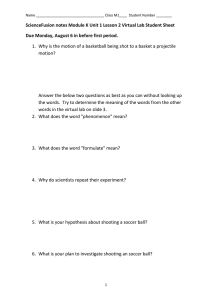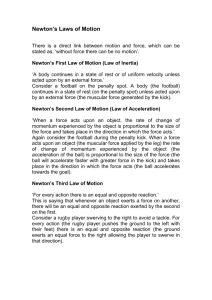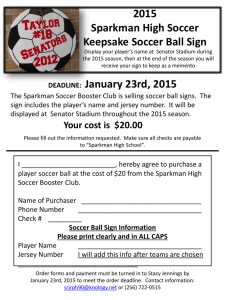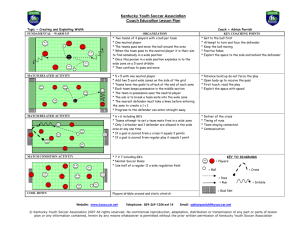third law
advertisement
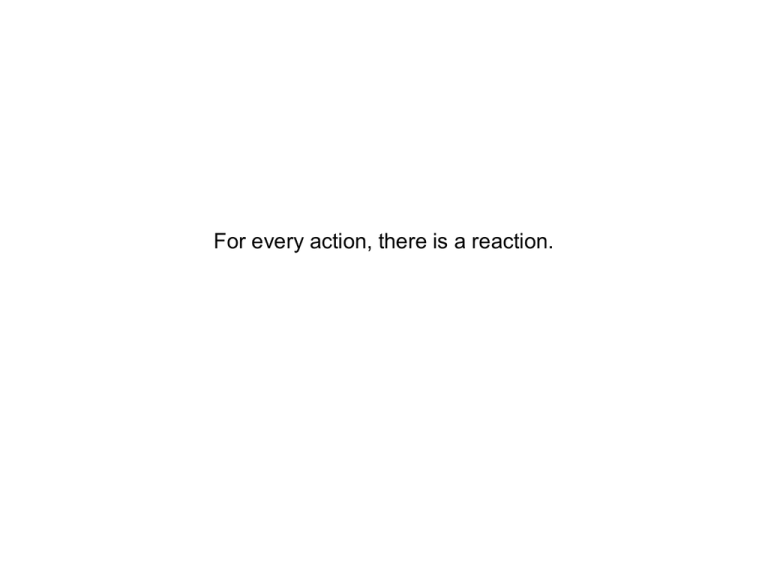
For every action, there is a reaction. For every force, there is an equal and opposite force. We can NOT be talking about a BALANCING force. Why not? We can NOT be talking about a BALANCING force. Why not? Because things do in fact accelerate sometimes! Whenever one object exerts a force on a second object, the second object ALWAYS exerts a force back on the first object. We call the first force the “action” and we call the second force its “reaction. There is ALWAYS a reaction. It is ALWAYS in the opposite direction. It is ALWAYS exactly as big as the action. Reaction forces are easy to name: Just reverse the direction and reverse the roles… “A table pushes up on a book.” “The book pushes down on the table.” The only tricky one is “weight”. But if you remember that weight is just the force of the Earth pulling down on you… “The Earth pulls down on the student.” “The student pulls up on the Earth.” But which force is bigger? Sometimes, it is hard to believe that the forces are equal. For example, when a car collides with a fly, when you name the action and reaction forces… …it is hard to accept that those two forces are equal in magnitude. But remember, the rule is that the FORCES are equal, not the resulting accelerations! If the two forces are each the only forces acting on their respective objects, then both objects WILL accelerate. But the accelerations will be INVERSELY PROPORTIONAL to the masses! Then, one last puzzle: If the forces are equal, why don’t they balance? In other words, where is the flaw in this argument: “When you kick a soccer ball, it can never accelerate because the force your foot exerts on the ball is no bigger than the force the ball exerts on your foot.” Since soccer balls DO accelerate when you kick them, something must be wrong with that argument. The answer to the puzzle is revealed with free-body diagrams! Make a free-body diagram for the soccer ball and another for the soccer player. What do you notice about the action-reaction pair: Force of player on ball—Force of ball on player? They are acting on different objects! Action-reaction pairs never balance each other because they do NOT act on the same object!

